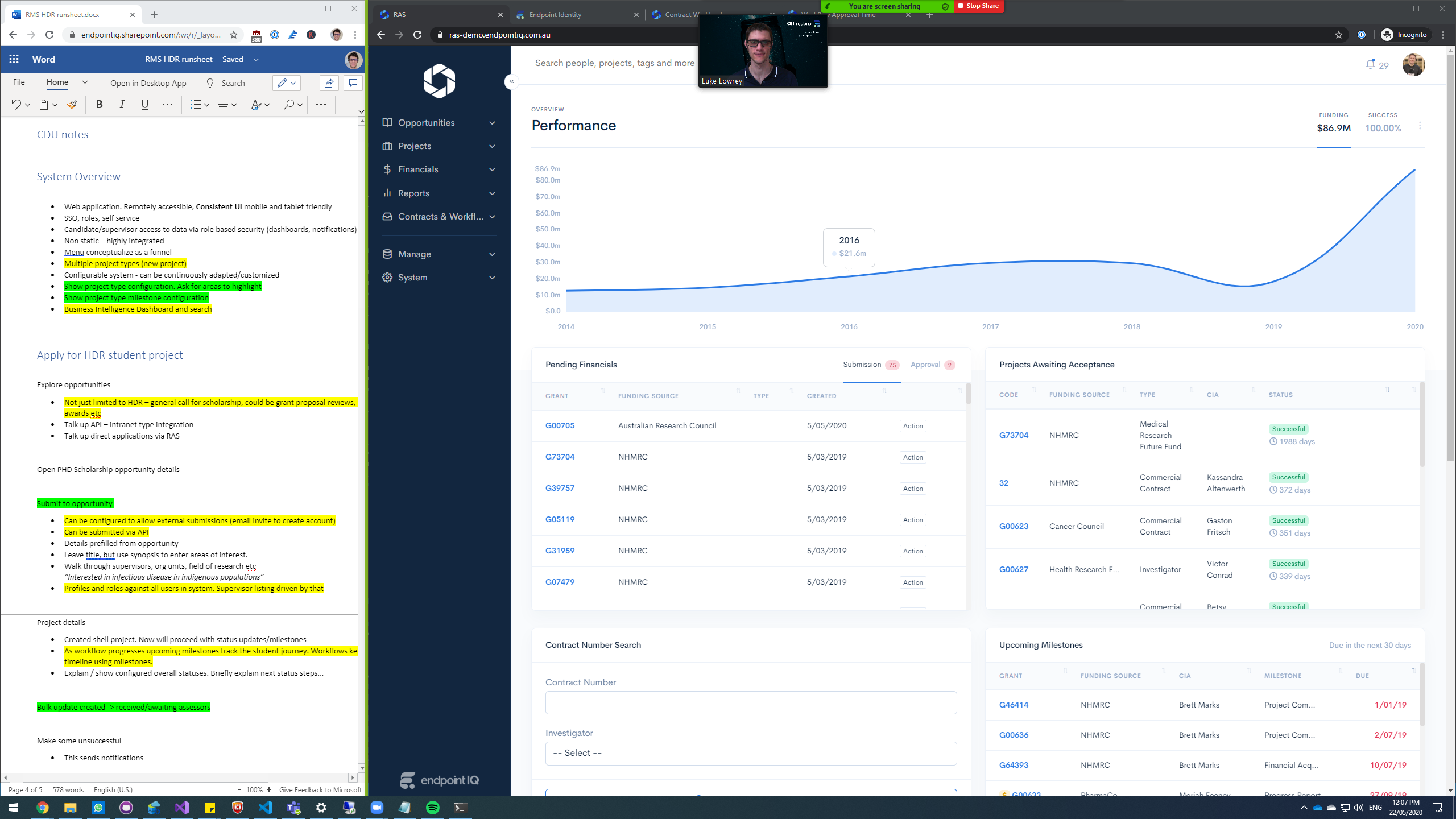Presentation tips for a better product demo
Software demos can be stressful and overwhelming. Use these tips to deliver a confident and professional demo.

Giving product demos can be stressful and overwhelming. You need to focus on the software, your presentation and keep your potential client's needs at the front of your mind. These tips help me stay focused and deliver a confident and professional demo.
Be prepared
The most valuable step you can take to improve your product demos is preparation. I have written a demo preparation guide that outlines the research, planning and practice techniques that have helped me.
Don't go alone
It is very difficult to maintain your focus and enthusiasm for any presentation longer than half an hour. In my experience it is nearly always best to bring some backup from your team. An extra person can concentrate closely on questions, get a better read on how the demo goes, and give you a chance to catch your breath every now and then.
- Only bring people that will be able to contribute. I have found that using two presenters works well. One person takes control of the software and the other handles the introductions and company overview, and is the first call for questions.
- Each person included in the presentation should be given some space to contribute. It could be as simple as splitting the introduction and demo between you or handing off a standard technical explanation. There is nothing more awkward then sitting through an hour meeting and never having a chance to contribute.
- Try to include people to cover both business and technical expertise.
Be friendly but stick to business
It is very useful to break the ice with your audience before you kick on into the demo. My advice is to keep it simple and brief; you don't want to appear unfriendly but you also need to ensure you have time to show your software in the best light.
Mostly stick to your plan
Hopefully you have come prepared with a demo of some high-level user stories and a demo script. A demo where no one says anything is not a good sign but being peppered with questions and never getting into a groove is also an issue. You need to balance answering questions and adapting to the audience's preference with telling the story of your product the way you have planned.
- Let the audience know up front what you are going to show them. It gives them a chance to point out what is important to them and will also give them an idea of what will be shown so they don't need to jump ahead with questions.
- Always describe the software in business terms rather than technical functions. An easy way to remind yourself to do this is starting explanations with "As a [end user type] I can..."
- Stop and ask for questions at convenient spots in your presentation. For example, once you have completed some workflow.
Control your tempo
A problem that many developers have (including me) when presenting software is moving too fast. When you know the product well and have a time limit it is easy to blow through every function of the software at a million miles an hour.
- Don't try to show everything. You should spend the most time on your product's strongest features; no need to open every page.
- Deliberately pause at key discussion points. I normally mark these in my demo script. You want to leave on the screen interesting, strong features of the product as you pause and make your point.
- When you pause, take your hands completely off the keyboard and mouse. This is your cue to look at the camera or audience and speak using hand gestures.
- Go easy on the mouse. Try not to dart your mouse all over the screen. An annoying habit I need to be aware of is flicking my mouse all around the button I am talking about. Slow your mouse movement down and take your hand off completely when you talk.
Tips for presenting remotely over video

- Prepare your software and desktop. Get your product setup in its own window or tabs. Close down your chat app, email and anything else that could pop something embarrassing onto the screen.
- Share as little as possible. If you are demoing a web application, stick to the web browser. As above you want to limit the chance of oversharing.
- Keep your script on screen. If you have a big monitor and can limit your screen sharing to a single window it is very useful to keep your notes visible to the side of the main demo.
- Get the right window size and zoom level. With a big widescreen monitor sharing Fullscreen is not always the best option. Play around with window size and zoom level before the demo to find a good fit.
- Open by stating "We are looking at the homepage..." this should prompt someone to interrupt your screenshare is not working and is more natural than "can everyone see this?"
- Make sure you look at the camera. I have a habit of watching my own video feed when presenting. Because of this I tend to move my video to just below my webcam to ensure I am always facing the camera.
- Try a custom virtual background. For a simple, branded background try actionablebackground.com. If you know the audience well or have a nice office, I don't think this is necessary.
Tips for presenting in person
- Try to position yourself at the front of a meeting room (in front of the big screen) facing toward the audience.
- Pausing is your cue to look around and make eye contact. It is also a good way to encourage questions from your audience.
- Always assume the presentation equipment will be missing the cables and adaptors you need. Bring your own.
- As above, have a backup internet source ready to go.
If you enjoyed the post, like or retweet the thread on twitter.
My presentation tips for running software demoshttps://t.co/PaikSK4ZU3
— Luke Lowrey (@lukencode) June 9, 2020
